Keon-Woo Kang
Painting Outside as Inside: Edge Guided Image Outpainting via Bidirectional Rearrangement with Step-By-Step Learning
Oct 05, 2020
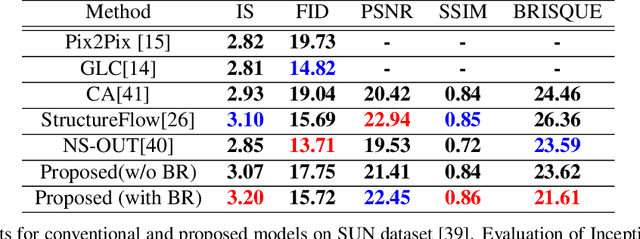
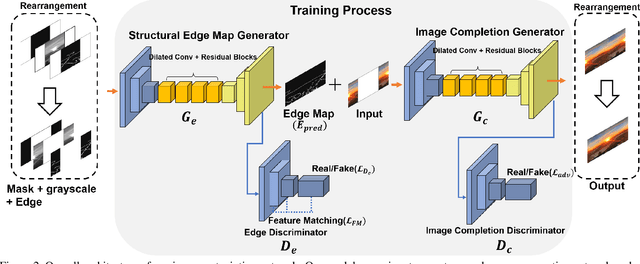
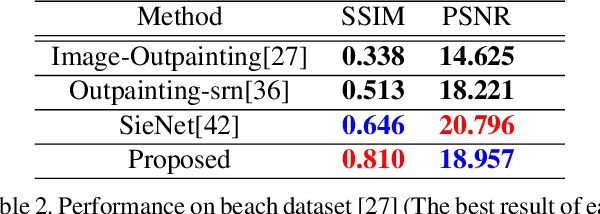
Abstract:Image outpainting is a very intriguing problem as the outside of a given image can be continuously filled by considering as the context of the image. This task has two main challenges. The first is to maintain the spatial consistency in contents of generated regions and the original input. The second is to generate a high-quality large image with a small amount of adjacent information. Conventional image outpainting methods generate inconsistent, blurry, and repeated pixels. To alleviate the difficulty of an outpainting problem, we propose a novel image outpainting method using bidirectional boundary region rearrangement. We rearrange the image to benefit from the image inpainting task by reflecting more directional information. The bidirectional boundary region rearrangement enables the generation of the missing region using bidirectional information similar to that of the image inpainting task, thereby generating the higher quality than the conventional methods using unidirectional information. Moreover, we use the edge map generator that considers images as original input with structural information and hallucinates the edges of unknown regions to generate the image. Our proposed method is compared with other state-of-the-art outpainting and inpainting methods both qualitatively and quantitatively. We further compared and evaluated them using BRISQUE, one of the No-Reference image quality assessment (IQA) metrics, to evaluate the naturalness of the output. The experimental results demonstrate that our method outperforms other methods and generates new images with 360{\deg}panoramic characteristics.
Towards Design Methodology of Efficient Fast Algorithms for Accelerating Generative Adversarial Networks on FPGAs
Nov 15, 2019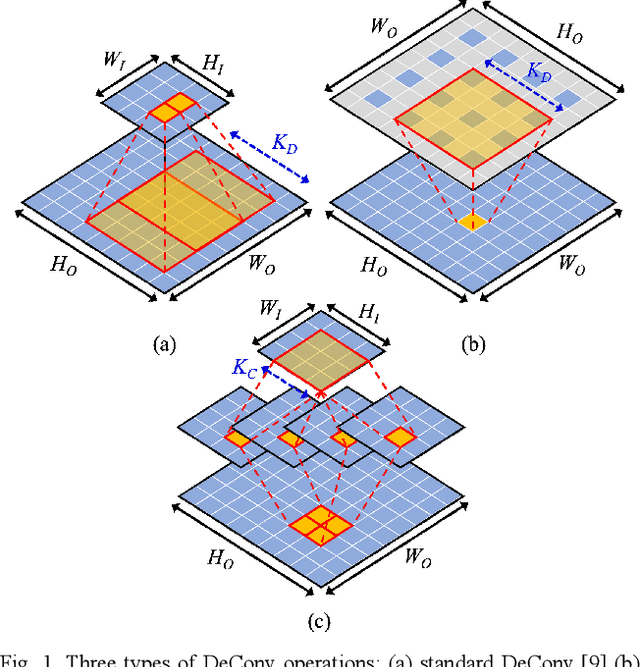
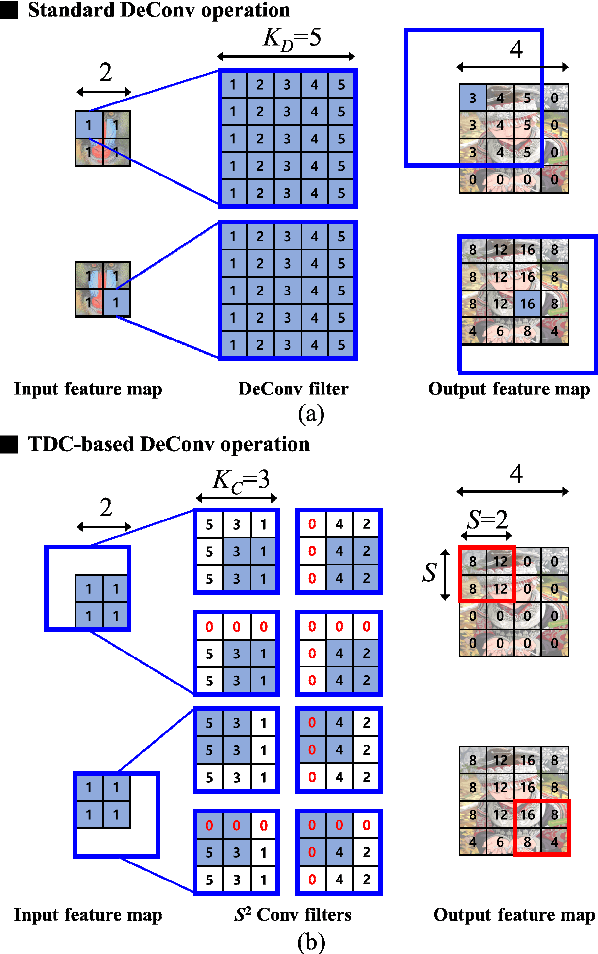
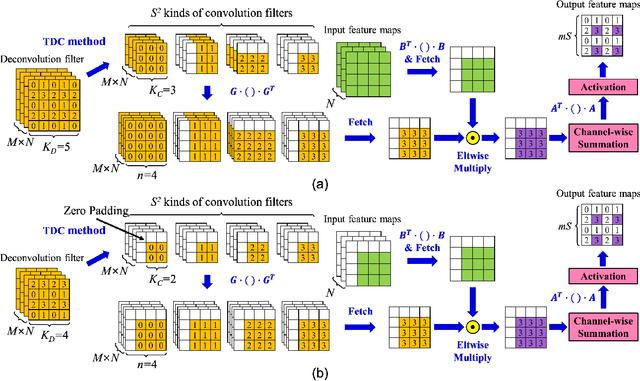
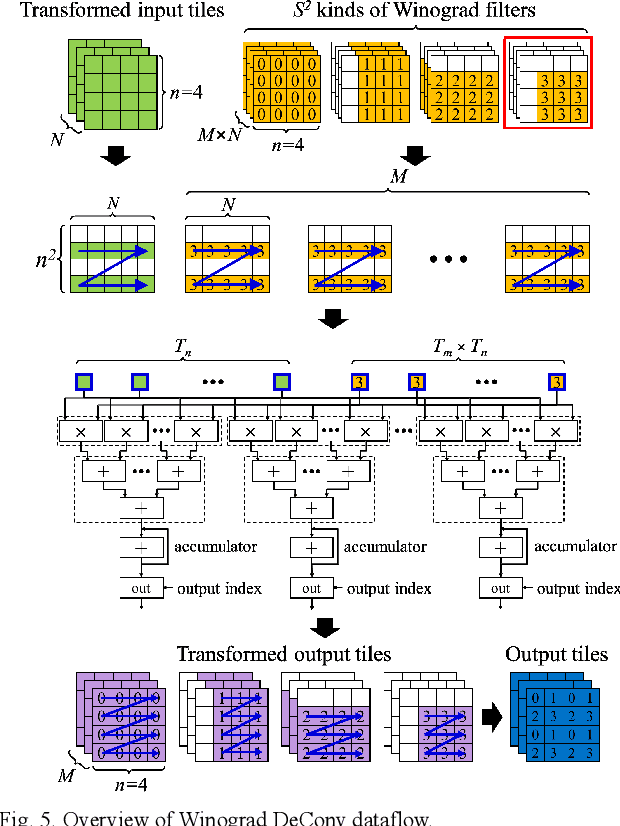
Abstract:Generative adversarial networks (GANs) have shown excellent performance in image and speech applications. GANs create impressive data primarily through a new type of operator called deconvolution (DeConv) or transposed convolution (Conv). To implement the DeConv layer in hardware, the state-of-the-art accelerator reduces the high computational complexity via the DeConv-to-Conv conversion and achieves the same results. However, there is a problem that the number of filters increases due to this conversion. Recently, Winograd minimal filtering has been recognized as an effective solution to improve the arithmetic complexity and resource efficiency of the Conv layer. In this paper, we propose an efficient Winograd DeConv accelerator that combines these two orthogonal approaches on FPGAs. Firstly, we introduce a new class of fast algorithm for DeConv layers using Winograd minimal filtering. Since there are regular sparse patterns in Winograd filters, we further amortize the computational complexity by skipping zero weights. Secondly, we propose a new dataflow to prevent resource underutilization by reorganizing the filter layout in the Winograd domain. Finally, we propose an efficient architecture for implementing Winograd DeConv by designing the line buffer and exploring the design space. Experimental results on various GANs show that our accelerator achieves up to 1.78x~8.38x speedup over the state-of-the-art DeConv accelerators.
 Add to Chrome
Add to Chrome Add to Firefox
Add to Firefox Add to Edge
Add to Edge